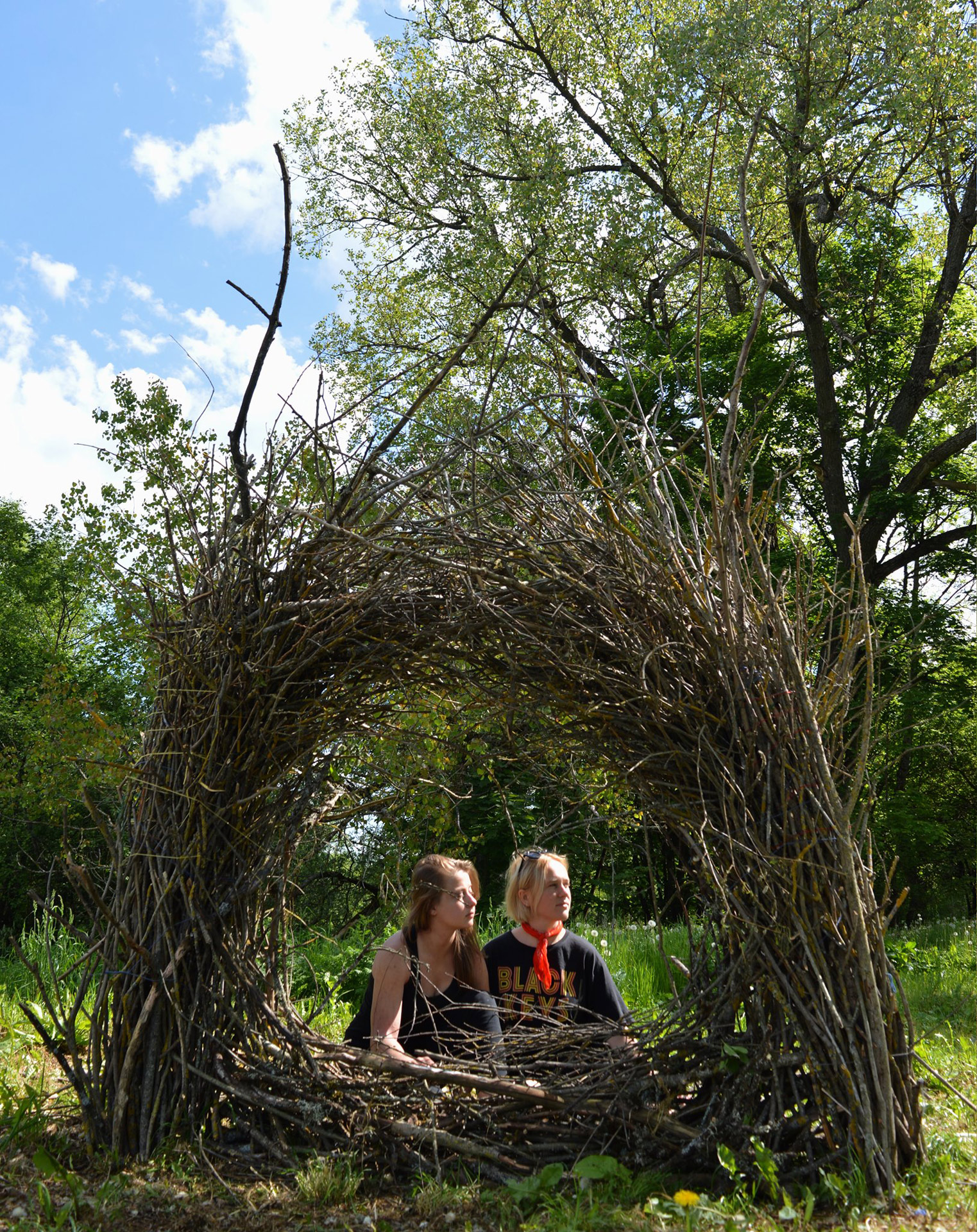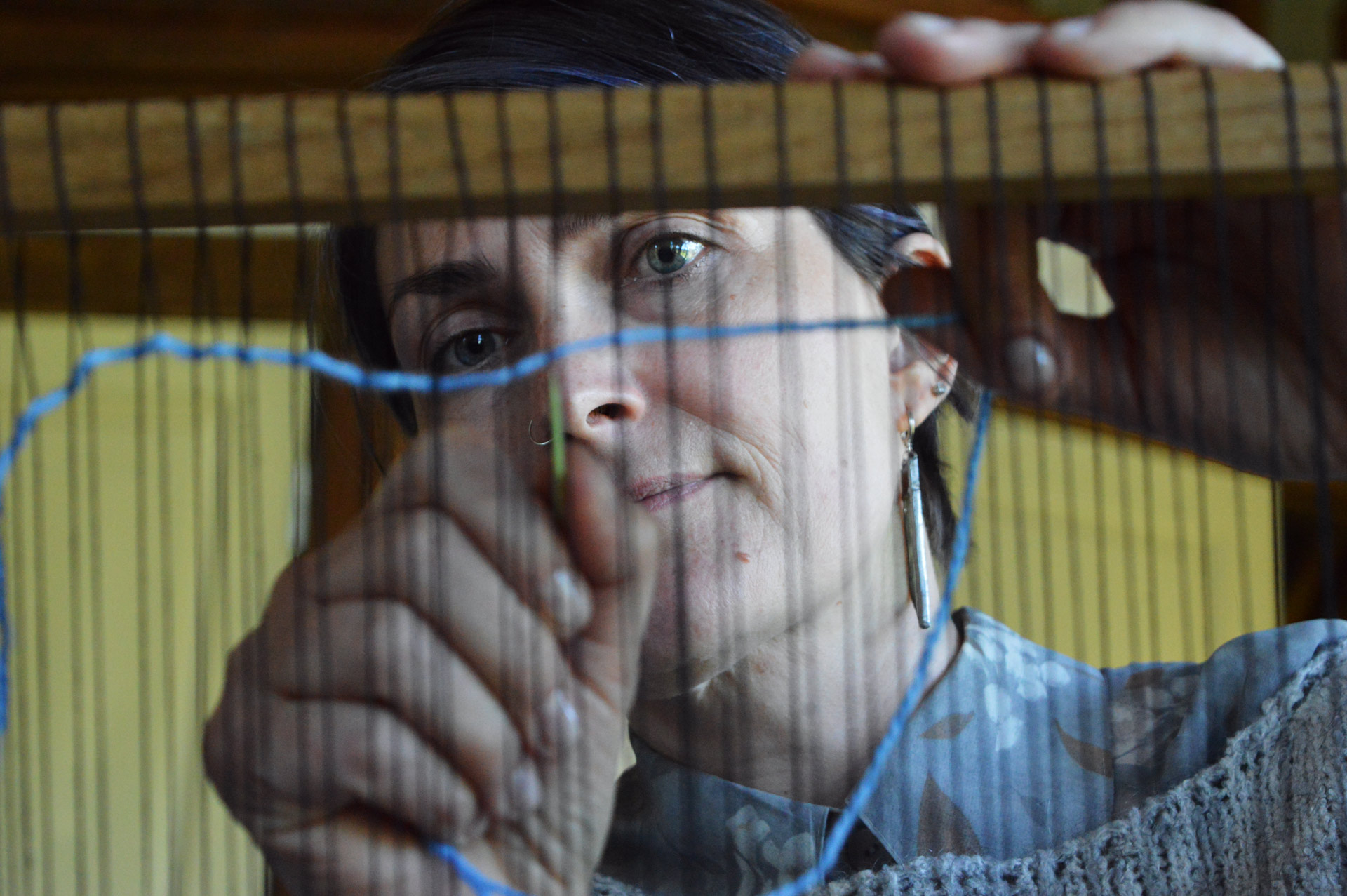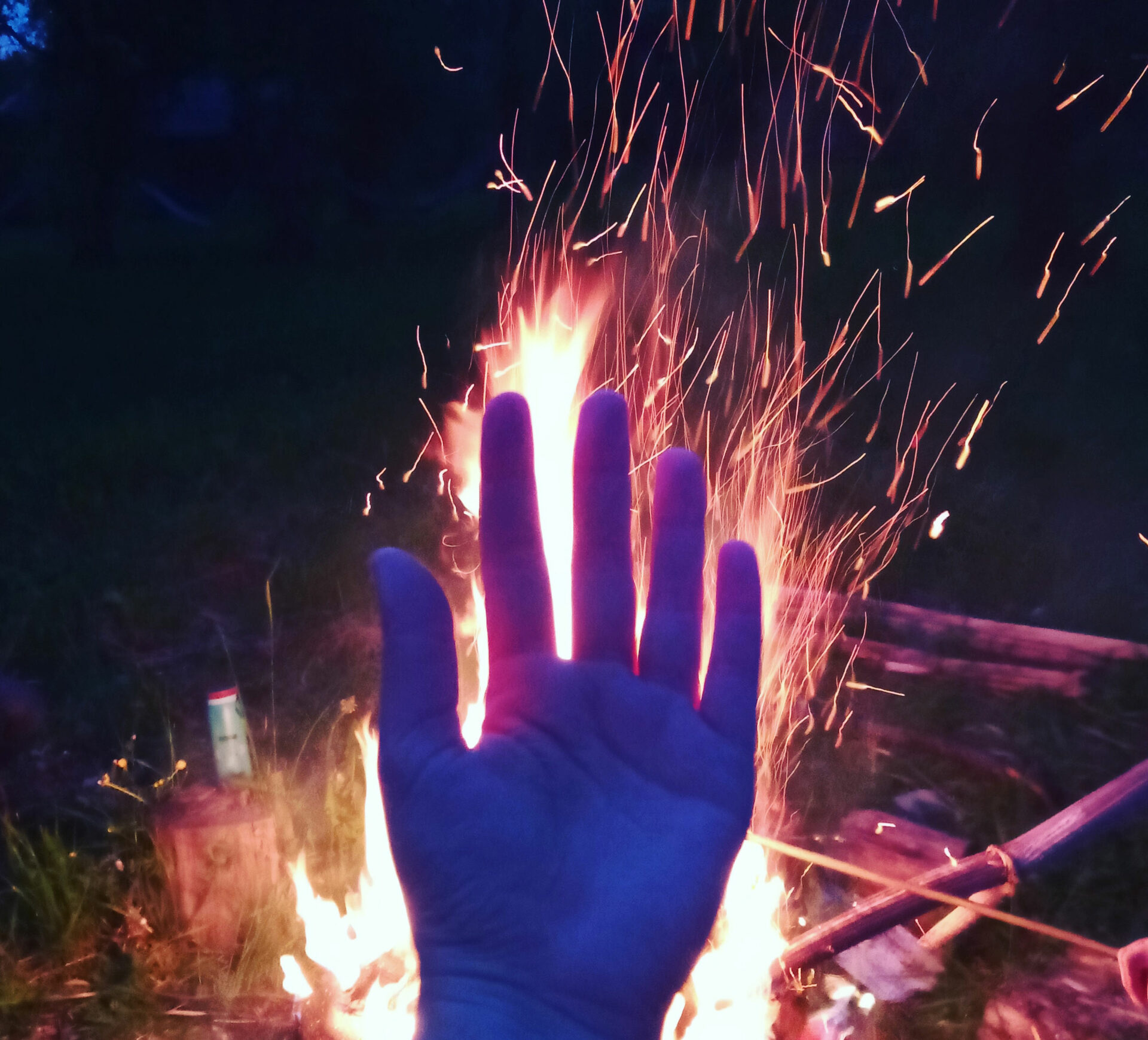Olga Bubich
Remembering Together, or the Memory We All Are Responsible for
Memory is what makes us who we are, it outlines and fills our “self” in, draws the contours of our personal perception of “here and now” and shapes a retrospective analysis of past decisions and actions – regardless of the fact whether those really took place or were only conceived. In case of serious memory impairment, “self” crumbles, turning a person into a set of reactions – a mechanism that needs only water, food and sleep.
However, in addition to individual memories we all have, memory, in its constant transformation, functions at many other levels: one can talk about the memory of family and kin, the memory of people and nation. Remembering who you were yesterday and who you are today shapes the history of your future tomorrow. Realizing the extreme importance of memories transmitted both in oral stories and cultural artifacts, in any historical period the authorities tried to gain control over people’s recollections – to impose “the right way” of remembering. Censored, or ”wrong”, works of art and literature were destroyed: in Nazi Germany in the 1930s, books that went against the official ideology were publicly burned; the same happened to the books during ”Cultural Revolution” in China in 1960-1970 or Kurdish literature in 1946 Iran [1]. However, again, as history shows, the desire to remember appears to be stronger than repressions – the verses by Osip Mandelstam – a poet, repressed by the Stalinist regime, are with us today: his wife Nadezhda learned them by heart.
“Being stripped of your memories is an act of violence that is perhaps akin to having your very life taken”, the Japanese writer Yoko Ogawa, the author of the dystopian novel “Memory Police,” published in her homeland in 1994 and translated into English in 2019, accurately notes [2]. Dementia is something that can dissolve, blur, dehumanize a person, but at the same destruction can occur at other levels of memory work. Under certain historical conditions, the whole nation can forget or adopt a distorted version of its past – to believe in victory in a situation of a tragic defeat.
What can help us save ourselves, our family, community, our kin, and our people in the times of tough censorship, pressure exerted on mass media and the repressions of opinion leaders? Turning to the lessons of the past, we understand that such a function can be performed by the spoken word that can enable us to share experiences that have the potential to get rooted in other people’s memories and thus – to become a myth, that is to claim, no matter how pretentious it may sound, for a chance for eternal life.
The project “The Art of (Not) Forgetting”, conceived in February 2021, reflects my desire to capture the memories of people who are now surviving the harsh traumatic historical period and witnessing with their own eyes things that, due to their exceptional emotional intensity, risk getting quickly distorted. The talks I had with 30 participants were captured in the texts of the memories they shared and the photographs I took of them while they were in the processes of forgetting and remembering.
The visual aspect has become part of the essentially text-centered project for one obvious reason. Having been engaged in photography and photo criticism for more than 10 years, a long time ago I realized that any conversation about this medium would be impossible without referring to the phenomenon of memory, to the endless paradoxes inherent in the coupling of the camera and the world: the oppositions of an elusive moment and our desire to preserve it; the purely personal opinion and constant claims for objectivity; the processes of remembering and forgetting. That is exactly why photography, as a tool and practice (of a photographer as a collector and a keeper of subjective imprints of reality) will always be critically important.
“The Art of (Not) Forgetting” – both as an exhibition and as a future photobook – is a collection of revelations that 30 people from Belarus, at the beginning of 2021, personally defined as the most painful (1) and the most resourceful ones (2). 60 stories about humiliation and happiness, death and love, shame and meaningful revelation. In these images, one can see faces of people who laugh or cry, shine with happiness or feel blocked by personal traumas, strive to forget or desperately try to remember. They are of different ages and professions, statuses and occupations. Their emotions would be preserved in the images I took, but the search for a way to present the material, in which memories could gain a greater resonance and power – at the level of the spoken word – remained relevant.
However, in addition to individual memories we all have, memory, in its constant transformation, functions at many other levels: one can talk about the memory of family and kin, the memory of people and nation. Remembering who you were yesterday and who you are today shapes the history of your future tomorrow. Realizing the extreme importance of memories transmitted both in oral stories and cultural artifacts, in any historical period the authorities tried to gain control over people’s recollections – to impose “the right way” of remembering. Censored, or ”wrong”, works of art and literature were destroyed: in Nazi Germany in the 1930s, books that went against the official ideology were publicly burned; the same happened to the books during ”Cultural Revolution” in China in 1960-1970 or Kurdish literature in 1946 Iran [1]. However, again, as history shows, the desire to remember appears to be stronger than repressions – the verses by Osip Mandelstam – a poet, repressed by the Stalinist regime, are with us today: his wife Nadezhda learned them by heart.
“Being stripped of your memories is an act of violence that is perhaps akin to having your very life taken”, the Japanese writer Yoko Ogawa, the author of the dystopian novel “Memory Police,” published in her homeland in 1994 and translated into English in 2019, accurately notes [2]. Dementia is something that can dissolve, blur, dehumanize a person, but at the same destruction can occur at other levels of memory work. Under certain historical conditions, the whole nation can forget or adopt a distorted version of its past – to believe in victory in a situation of a tragic defeat.
What can help us save ourselves, our family, community, our kin, and our people in the times of tough censorship, pressure exerted on mass media and the repressions of opinion leaders? Turning to the lessons of the past, we understand that such a function can be performed by the spoken word that can enable us to share experiences that have the potential to get rooted in other people’s memories and thus – to become a myth, that is to claim, no matter how pretentious it may sound, for a chance for eternal life.
The project “The Art of (Not) Forgetting”, conceived in February 2021, reflects my desire to capture the memories of people who are now surviving the harsh traumatic historical period and witnessing with their own eyes things that, due to their exceptional emotional intensity, risk getting quickly distorted. The talks I had with 30 participants were captured in the texts of the memories they shared and the photographs I took of them while they were in the processes of forgetting and remembering.
The visual aspect has become part of the essentially text-centered project for one obvious reason. Having been engaged in photography and photo criticism for more than 10 years, a long time ago I realized that any conversation about this medium would be impossible without referring to the phenomenon of memory, to the endless paradoxes inherent in the coupling of the camera and the world: the oppositions of an elusive moment and our desire to preserve it; the purely personal opinion and constant claims for objectivity; the processes of remembering and forgetting. That is exactly why photography, as a tool and practice (of a photographer as a collector and a keeper of subjective imprints of reality) will always be critically important.
“The Art of (Not) Forgetting” – both as an exhibition and as a future photobook – is a collection of revelations that 30 people from Belarus, at the beginning of 2021, personally defined as the most painful (1) and the most resourceful ones (2). 60 stories about humiliation and happiness, death and love, shame and meaningful revelation. In these images, one can see faces of people who laugh or cry, shine with happiness or feel blocked by personal traumas, strive to forget or desperately try to remember. They are of different ages and professions, statuses and occupations. Their emotions would be preserved in the images I took, but the search for a way to present the material, in which memories could gain a greater resonance and power – at the level of the spoken word – remained relevant.



I came up with an answer to this question on June 1, 2021 in the village of Kaptaruny, where, as a part of “Chashcha” retreat, several dozens people got together - many of whom had taken part in “The Art of (not) Forgetting” earlier in winter. I felt it could be interesting to release 30 positive memories and try to give them space in the collective memory of our group – to actually give an additional impetus to the intention the holders of these recollections had been articulating before when they said they wanted to keep particular special moments in their memory forever. The anonymity of the stories added to the group effect – when choosing a piece of paper with the texts of a now nameless storyteller, we then read out aloud someone's sincere happy moments one by one in a circle. And while doing this, I think I could say each of us was searching and finding the resonance with our own lives, we felt emotionally connected with the anonymous memory holders and were really... making the recollections leave more solid traces. Not only by those who shared them but also by ourselves – those who listened and read.
Some participants later admitted in personal talks taking home, as special symbolic tokens, not only other people’s memories but also the very pieces of paper with the printed texts tied with red threads that one of the artists had brought to the forest. The fragile nameless fragments that their holders had previously feared to forget one day now found a new home and new guardians.
This collective act of remembering, the mutual exchange of one’s intimate thoughts with the Other, seemed worthy of attention as a symbolic practice in the space of power we are able to create ourselves. It appeared to be a practice I would like to propose to use with one’s families or in a company of the close ones, at the level of the whole country and the world. I would like us to turn to our past more often and not devaluate the wonderful moments we were lucky to experience. I would offer to perceive them as personal, very significant and precious treasures – still no less important for other people, too. We need to learn to share, to listen, to learn to be grateful and accept our, in fact very obvious, similarities.
As 30 happy memories that were voiced out in the building of the summer Kaptaruny theater showed, in our desire to remember the beautiful, we did not go so far from each other and, as the first participant of “The Art (not) Forgetting” project said, all the brooks that at first glance might look very fragile and small in reality are a part of one big strong river. We are able to take care of ourselves and we are able to remember who we really are.
------
Facebook
Some participants later admitted in personal talks taking home, as special symbolic tokens, not only other people’s memories but also the very pieces of paper with the printed texts tied with red threads that one of the artists had brought to the forest. The fragile nameless fragments that their holders had previously feared to forget one day now found a new home and new guardians.
This collective act of remembering, the mutual exchange of one’s intimate thoughts with the Other, seemed worthy of attention as a symbolic practice in the space of power we are able to create ourselves. It appeared to be a practice I would like to propose to use with one’s families or in a company of the close ones, at the level of the whole country and the world. I would like us to turn to our past more often and not devaluate the wonderful moments we were lucky to experience. I would offer to perceive them as personal, very significant and precious treasures – still no less important for other people, too. We need to learn to share, to listen, to learn to be grateful and accept our, in fact very obvious, similarities.
As 30 happy memories that were voiced out in the building of the summer Kaptaruny theater showed, in our desire to remember the beautiful, we did not go so far from each other and, as the first participant of “The Art (not) Forgetting” project said, all the brooks that at first glance might look very fragile and small in reality are a part of one big strong river. We are able to take care of ourselves and we are able to remember who we really are.
------
Other projects
Projects:





